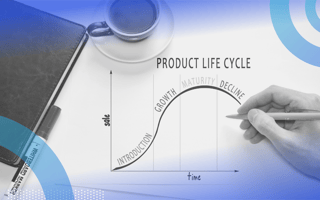PLM involves all aspects of production, design, marketing, sales, support, scalability, and all other aspects of the product’s creation and delivery to customers. PLM is useful when making decisions surrounding the product’s launch, growth, value and eventual removal from the market.
What is product life cycle management and its importance?
- Product life cycle management is critical in determining how to be strategic about a product’s launch and growth.
In order for any product to be successful, it must provide value to its users. This is true about any product, regardless of its position in the life cycle. Some key product life cycle management fundamentals include maintaining secure, managed access to the product, maintaining the integrity of the product throughout its life cycle, and ensuring that all data and processes used in the design, engineering, sales and service of the product are managed throughout its life.
What are the 5 stages of product life cycle?
- The five stages of the product life cycle are: concept and design, development, production and launch, support and service and retirement.
Every product goes through five stages in its life cycle. In the concept and design stage, the product’s value is discovered, its vision is established, customer personas are established and wireframes are created for what the product will look like. The development stage is when the product is built, iterations are developed and a viable product is created. Production and launch is the process in which internal and external stakeholders supporting the product gather all materials necessary to successfully launch the product. The support and service stage includes all processes for maintaining the product’s post-launch value while continuing to add value and discover new audiences. The retirement stage is when the product’s value is at a minimum and most customers have replaced the product with something that better fits their needs, or when the company chooses to discontinue the product ending the its life cycle.
What is agile product lifecycle?
- Products created through Agile have a life cycle of six stages: concept, inception, iteration, release, maintenance and retirement.
In the concept phase, product owners determine the scope of the project and communicate key goals and requirements in documentation before moving onto the inception phase. During inception, the concept is outlined, and the software development team begins designing the project architecture and user interface. From here, the product moves into the iteration phase.
The iteration phase is where developers work with UX designers to create an iteration of the product that includes all requirements and feedback and the bare functionality of the product. Iterations are repeated several times until a minimum viable product is produced.
In the release phase, the product is released to quality assurance analysts, engineers and managers to perform functionality tests while user training takes place and documentation is created. At the end of this phase, the product is deployed into production.
The next phase is the maintenance phase, in which development teams provide support to ensure the product remains functional. Additionally, new iterations may be developed to add new functionality and updates to the existing product.
The final stage is the retirement phase, where the product is replaced or becomes obsolete and developers stop supporting it, eventually removing it from the market.





